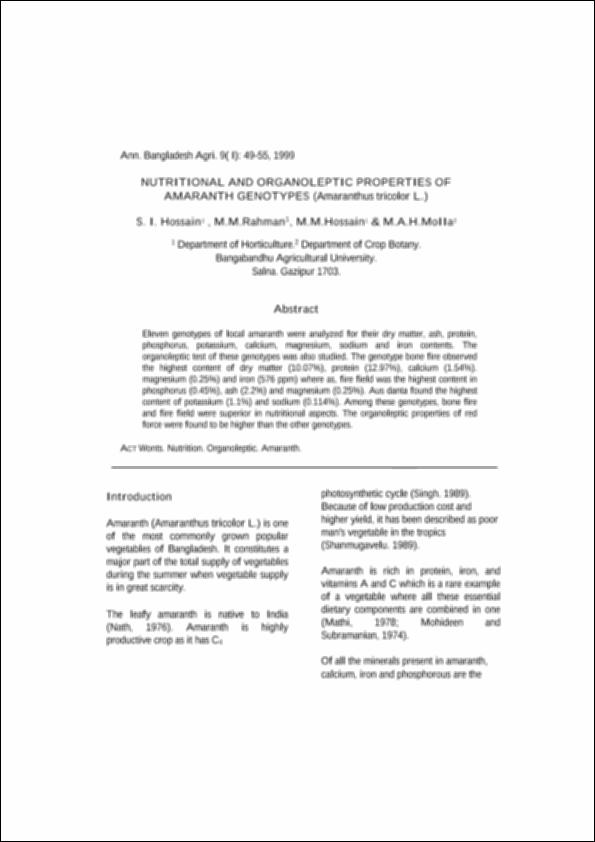Nutritional and organoleptic properties of amaranth genotypes (amaranthus tricolor l.)
| dc.contributor.author | Hossain, S. I. | |
| dc.contributor.author | Rahman, M.M. | |
| dc.contributor.author | Hossain, M.M. | |
| dc.contributor.author | MoIIa, M.A.H | |
| dc.date.accessioned | 2021-03-07T06:40:07Z | |
| dc.date.available | 2021-03-07T06:40:07Z | |
| dc.date.issued | 1999-06 | |
| dc.identifier.uri | http://publications.bsmrau.edu.bd/handle/123456789/1014 | |
| dc.description.abstract | Abstract : Eleven genotypes of local amaranth were analyzed for their dry matter, ash, protein, phosphorus, potassium, calcium, magnesium, sodium and iron contents. The organoleptic test of these genotypes was also studied. The genotype bone fire observed the highest content of dry matter (10.07%), protein (12.97%), calcium (1.54%). magnesium (0.25%) and iron (576 ppm) where as, fire field was the highest content in phosphorus (0.45%), ash (2.2%) and magnesium (0.25%). Aus danta found the highest content of potassium (1.1%) and sodium (0.114%). Among these genotypes, bone fire and fire field were superior in nutritional aspects. The organoleptic properties of red force were found to be higher than the other genotypes. | en_US |
| dc.description.sponsorship | BSMRAU | en_US |
| dc.language.iso | en | en_US |
| dc.publisher | BSMRAU | en_US |
| dc.relation.ispartofseries | Vol-1; | |
| dc.subject | Nutrition | en_US |
| dc.subject | Organoleptic | en_US |
| dc.subject | Amaranth | en_US |
| dc.title | Nutritional and organoleptic properties of amaranth genotypes (amaranthus tricolor l.) | en_US |
| dc.type | Article | en_US |
Files in this item
This item appears in the following Collection(s)
-
Vol-9, No-1. 1999 [12]

